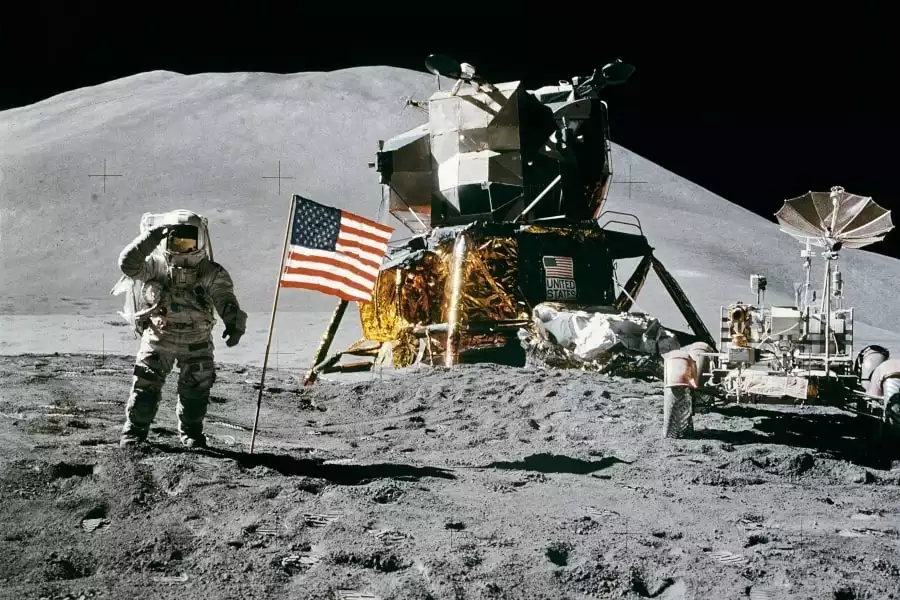
How Long Would It Take To Walk Around The Moon?
To walk on the Moon astronauts should be physically trained and properly equipped in the first place — after all, Moon walking is no easy task. First, a walk around the Moon might cost humanity a lot of money, but it’s important to make investments in such projects. Moon-walking projects are to be appreciated because they help us get knowledge about outer space and our planet. But how long would it take to walk around the Moon, provided you had the means and equipment? Let’s find out about the time, skill, and equipment necessary for this hypothetical endeavor, which, with the development of space tech, may not be purely hypothetical soon enough.
Can Astronauts Walk On The Moon?
Astronauts are helping humanity and our science evolve. Exploring what’s beyond our Solar System would not be possible without taking people or technology to space. Ever since Neil Armstrong had his first moonwalk, more and more people have become interested in helping astronauts with tech and engineering materials. So yes, astronauts can indeed walk on the Moon — more importantly, they already have. But no one has managed to actually walk around as of now. Why?
First, a moonwalk requires special clothes and equipment. Since there’s no gravity on the Moon, this equipment needs to be adapted to the outer space conditions. On a metaphorical note, it can be said that the Moon is the only close place where we can learn more about what it means to be in space. Not only that there’s no gravity, but it’s also very cold.
How Long Would It Take To Walk Around The Moon?
First, one should answer how fast can a human walk on the Moon? Assuming an astronaut’s Earthly of 3.1 miles per hour or 5 km per hour, with a Moon circumference of 10,921 km (6,786 miles), it would not take too long to cross this distance. But according to Orbital Today, international space agencies like ESA estimate an astronaut walking 4 hours every day would need 547 days to cover this distance. This would mean 1 year and a half of walking the Moon’s circumference. However, we need to assume that the route is not disrupted by any craters that could potentially slow down this process even further.
A moonwalk mission would require endurance and lots of exercise in low gravity environments so that the cardiovascular system and muscles are properly trained. Only astronauts that have been trained under ultra-marathon conditions can achieve this level of fitness, according to Aidan Cowley, an ESA scientific consultant. And even when walking at the highest speeds, a moonwalk is only possible for 3-4 hours a day.
How Do Astronauts Walk On The Moon Without Gravity?
When thinking about gravity, it’s also important to address locomotion too. When walking, stepping, or jumping, we apply force against gravity, and gravity is pulling us to Earth. Moon gravity force is just 17% of the Earth’s gravity. This means that if you’re taking a scale to the Moon and you weigh yourself, your weight would be only 17% of what you have been weighing on the planet Earth. But keep in mind that you would also be wearing a heavy and bulky spacesuit.
Does Less Gravity Make You Faster?
There are many challenges associated with walking around the Moon. From a logistical point of view, the moonwalk is possible, as Aidan Cowley from the European Space Agency is trying to explain, yet this mission would be too strange to support. The first challenge involves carrying as many supplies as possible, such as oxygen, water, and food. Let’s agree, no man can carry that much for a 1.5-year trip, so anyone who walks on the lunar surface will have to walk next to the rover that carries all these supplies. So why walk at all?
Apollo astronauts’ moon walking was 2.2 km per hour, which is about half of the Earth’s speed. However, Aldrin and Armstrong were hopping rather than walking in their suit and under 17% gravity conditions, which is a rather peculiar way of moving. However, contrary to popular belief, astronauts were moving slowly not because lunar gravity was low but because their spacesuits were not flexible enough to move arms, increasing their Moon walking speed significantly.
So, Will We Walk The Lunar Circumference?
Very unlikely because this experiment has very little scientific value and calls for too much time and effort. As already mentioned, such a trip would take approximately 547 days or about 1.5 years to complete. However, we may soon have a permanent lunar base for a further trip to Mars, which seems way more important.








